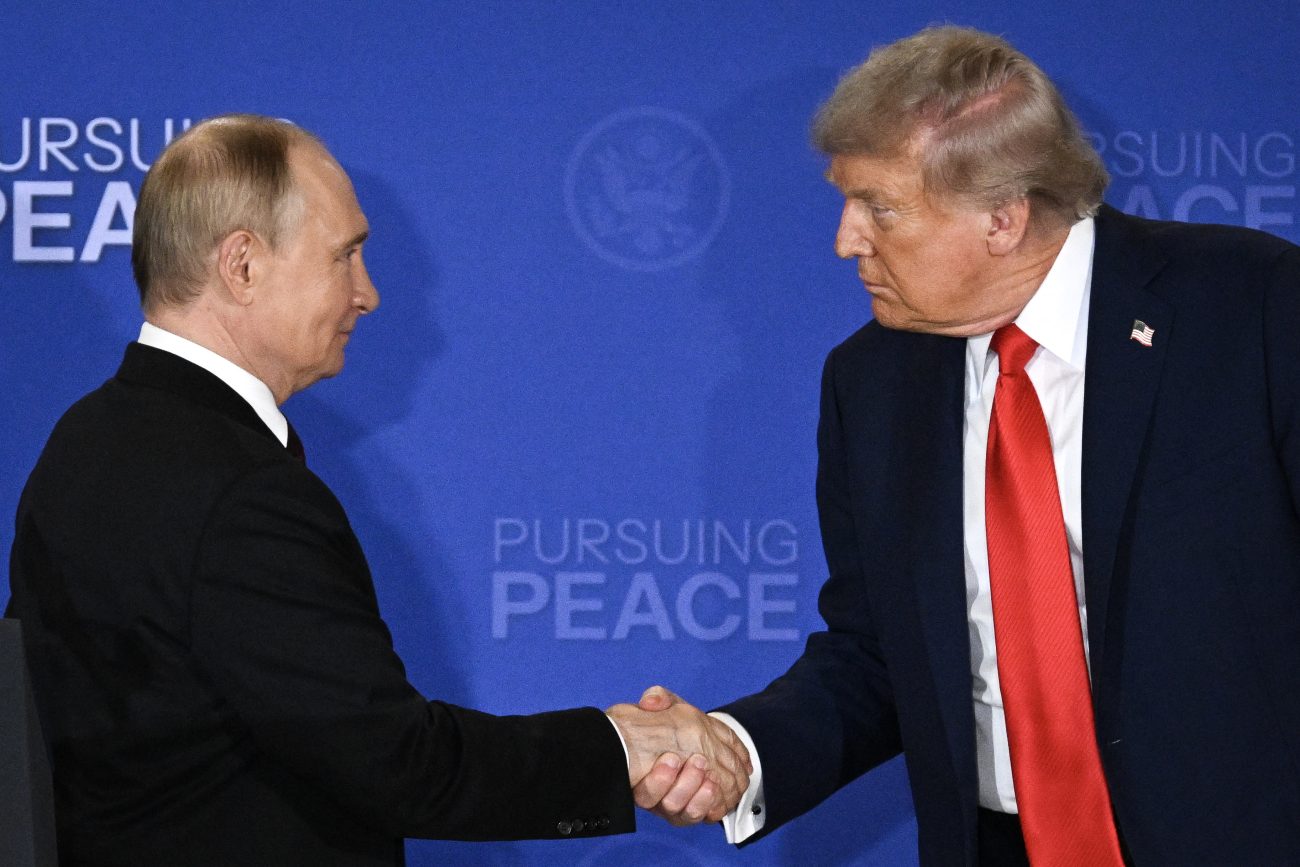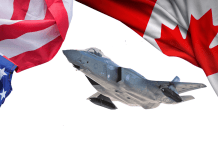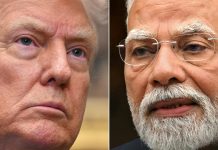Did the “Ice melt” at the Anchorage base of Alaska during the talks between Russian President Vladimir Putin and his host, U.S. President Donald Trump, in what happened to be their seventh meeting as heads of their respective countries?
Incidentally, this summit was the first between an American President and his Russian counterpart during a full-scale Russian invasion of a European country, a country that is strongly backed by the European members of NATO and the European Union as a whole, more or less unconditionally.
And the summit was expected to result in a “ceasefire”, if not reaching the bigger goal of peace in Ukraine.
It will be very difficult to find an answer to the above question that is acceptable to all. If one goes by the western mainstream media, which this writer did sitting in a NATO country and surfing all the television networks, including the BBC, for over seven hours on Friday, not a single correspondent, anchor and guest is prepared to deviate an inch from the narrative that Trump had taken the most disastrous step by inviting the “murderer”, “dictator” and “most unreliable” Putin, betraying, thus, the cause of democracy and brave Ukrainians.
One did not see a single participant in Fox, CNN, CNBC, ABC, or BBC saying differently. The same partisan narrative also dominated the day’s papers, like the New York Times, Washington Post, and the Wall Street Journal.
In fact, some of the reporters and guests said that they felt sick in seeing Trump warmly welcoming Putin, walking together with him on the red carpet, and then inviting the Russian President to share his limo “Beast” up to the venue of the meeting.
They were expecting that Trump would keep up his threats that he had made while on his flight to Alaska in the morning, that he would come out of the meeting in minutes if talks with Putin did not lead to a ceasefire.
Obviously, they must have been disappointed that the much-talked-about summit did not result in any ceasefire, despite the talks between the two Presidents along with their teams lasting for nearly three hours.
Let alone walking out, Trump came out together with Putin to address a brief joint press conference without any questions. And the body language displayed by the two leaders did not indicate bitterness whatsoever. Instead, Trump said they would meet again, “probably” very soon, with Putin expecting “next time” in Moscow.
It was an unusual conference in the sense that host Trump was not the first to speak; he extended that prerogative to Putin. The Russian leader did say that he wanted the war, “a tragedy”, to end soon by eliminating its “primary causes”, but devoted most of his time to the importance of the U.S.-Russian relations.
Most importantly, he said, had Trump remained in office after the 2020 election, the war would not have broken out. He described his relationship with Trump as “business-like” and their meeting as a “starting point for resolution” of the conflict, and added that Ukraine and Europe must not “sabotage” talks.
On his part, Trump revealed that there were points of disagreement and “there is no deal until there is a deal,” adding, “we didn’t get there” despite progress.
However, he said that “many points were agreed to” but “a few” remain, of which “one is the most significant” without specifying what. Importantly, he pointed out that he would call Ukrainian President Zelensky and European leaders soon – and it is “ultimately up to them”.
As one writes, comes the news that Trump, in a recorded interview with Fox News after the talks, apparently graded his meeting with Putin to be a “10 out of 10”, adding: “We got along great.” He repeated that now it was up to Zelensky to get a deal done, along with European involvement. He said that Russia and Ukraine would set up talks next, with both Putin and Zelensky attending.

But Trump sounded sceptical about whether Zelensky would agree to a deal. “Maybe they’ll say no.” But he urged Zelensky to “Make a deal”.
What this “deal” could be has not been revealed. However, going by what Putin told the press – and Trump praised the former in his subsequent interview to Fox for “agreeing” that if he were President, the Ukraine war “would have never happened” – NATO’s doors to Ukraine are closed.
Both Putin and Trump did indicate that had the previous Biden Administration not gone along with Europe and given a categorical assurance that Ukraine would not be made a member of NATO, there would have been no war.
Though the Russian invasion of Ukraine could be analyzed in many ways, there are strong merits in the argument that Putin found it hard to tolerate the persistent humiliation of Moscow by the United States and Western Europe ever since the dissolution of the Soviet Union in 1991.
The EurAsian Times once explained how all the important agreements on not expanding NATO and other arms control and confidence-building measures, agreed upon or concluded between Russia and Western countries since 1991, have been broken not by Moscow but by Washington.
It seems that the Western elites in general and those in Europe in particular continue to display a kind of “McCarthyism” in their thoughts that the West was the unconditional “victor” in the Cold War, and therefore they have every right to determine how the constituents of the former Soviet Union (USSR) would be run. They do not tolerate any dissenting opinion on Ukraine.
In the narratives of these European elites, there cannot be any scope for reconciliation with Putin and Russia until Moscow’s total subjugation to the international order as determined by them. And that is the reason why they are said to have more or less brainwashed/pressurized Ukrainian President Volodymyr Zelensky to remain uncompromising and rigid on any talks on peace or ceasefire agreement with Russia.
It may be noted that the Western capitals, including Washington, had played an active role in openly supporting protesters seeking to overthrow the legally elected Ukrainian government while covertly conspiring to select pro-Western Ukrainian leaders to replace pro-Russian President Viktor Yanukovych.
And it was only when civil war broke out in 2014 following the ouster of Yanukovich that Putin helped the ethnic Russian rebels who resisted the new West-selected Ukrainian leaders and then annexed Crimea in March 2014.
Also noteworthy is the fact that Ukraine has not been able to resolve its ethnic and linguistic contradictions since becoming an independent country in 1992 after the breakup of the Soviet Union. As it was an important part of the Russian empire for centuries, there are a significant number of Russian-speaking and pro-Moscow Ukrainians in the eastern parts of the country, including Crimea (which, incidentally, was made a part of Ukraine in 1954 for administrative convenience by the then Soviet President K Nikita Kruschev, who was himself a Ukrainian).
In the post-Soviet period, the incumbent Ukrainian governments faced the challenge of melding these different and often incompatible communities into a nation-state. Those of Russian ethnicity resisted, particularly in the two regions of Donetsk and Luhansk, what was called the ‘Ukrainianization’ policy of West-supported governments, which tried to give Ukraine a “European identity” by negating the centuries-old Russian heritage or connection.
It was against this background that, at the time of the annexation of Crimea in 2014, Putin explained that the West had crossed “a red line” in supporting what he considered the illegal overthrow of the Ukrainian government. The West, he argued, “cheated us (Russia) again and again.”
And yet, in 2015, representatives of Russia, Ukraine, the Organisation for Security and Cooperation in Europe (OSCE), and the leaders of two pro-Russian separatist regions signed a 13-point agreement in February 2015 at Minsk.
The leaders of France, Germany, Russia, and Ukraine, gathered in Minsk at the same time, also issued a declaration of support for the deal that called, among other things, to start a dialogue on interim self-government for the Donetsk and Luhansk regions in accordance with Ukrainian law and acknowledge their special status by parliamentary resolution.
However, that was not done, and in 2021, Zelensky talked of recovering every inch of the country, including Crimea, with the U.S. and Europe promising him military and economic help and rekindling his hope of joining NATO.
Under the Biden administration, the U.S. increased pre-positioned weapons stocks in Poland and moved a helicopter battalion there from Greece. Paratroops from the 173rd Airborne were deployed to the Baltic states. More troops were sent from Italy to eastern Romania, and others went to Hungary and Bulgaria.
The U.S. military presence in Europe also increased from 74,000 to 100,000 troops. Four airborne fighter squadrons became 12, and the number of surface combatant ships in the region increased from five to 26. Combat air patrols and surveillance were flying 24/7 missions over the alliance’s eastern flank, with visibility deep inside Ukraine.
It is against this background that Russia was amassing troops in the bordering region of Ukraine, as large as 100,000, if Western reports are to be believed.
But at the same time, it is important to note that on December 17, 2021, Putin proposed a treaty between the United States and Russia that could have prevented war.
Its principal clauses were that the US would prevent the further eastward expansion of NATO, while it would not have required any territorial concessions to Russia, would not have constrained Ukraine or any European state from engaging in bilateral military or economic engagement with Kyiv, or threatened any other state.
But it seems that Biden was not impressed. In subsequent talks with Russians in January 2022 in Geneva, his officials rejected the Russian proposal to close NATO’s doors. Instead, they offered talks and trust-building measures in a number of security areas, including the deployment of troops and the placement of weapons on NATO’s eastern flank along the border with Russia. But the offer was “conditioned on de-escalation of the military threat to Ukraine.”
As if all this was not enough, with National Security Agency authorization, the U.S. established a direct communication line from the Ukrainian military to the U.S. European Command. The highly secure system would keep the Americans in direct contact with their Ukrainian counterparts as events unfolded.
The administration was also sending arms to Ukraine. In December 2021, Biden authorized an additional US$200 million in weapons to be drawn from U.S. inventories.
Viewed thus, the Russian invasion of Ukraine was possibly the result of Putin being provoked relentlessly by the Biden Administration.
In that sense, Trump seems to have a point when he says the Ukraine war was avoidable.
But the fact that it was not, how the war will come to an end, now that Putin seems to insist on “Land (predominantly inhabited by Russians in Eastern Ukraine, along with Ukraine, all under Moscow’s control) for Peace”, along with a strong “NO” to Ukraine’s membership in NATO? Putin can always cite many instances in history of new states emerging out of war or territories being exchanged, the most prominent being World War I.
After all, most wars do end in compromise. And even if its borders are changed, Ukraine will still be the second-largest country in Europe after Russia.
Trump seems to be in favour of such a compromise, and if the Alaska summit talks are any indication, he is optimistic about Putin making further concessions. But he is not sure of so in the case of Zelensky and capitals like London, Paris, or Bonn, all displaying rigid McCarthyism.
In such a case, will Trump find an excuse to free the United States of its commitment toward Ukraine and normalise ties with Russia? Time will tell.
- Author and veteran journalist Prakash Nanda is Chairman of the Editorial Board of the EurAsian Times and has been commenting on politics, foreign policy, and strategic affairs for nearly three decades. He is a former National Fellow of the Indian Council for Historical Research and a recipient of the Seoul Peace Prize Scholarship.
- CONTACT: prakash.nanda (at) hotmail.com




